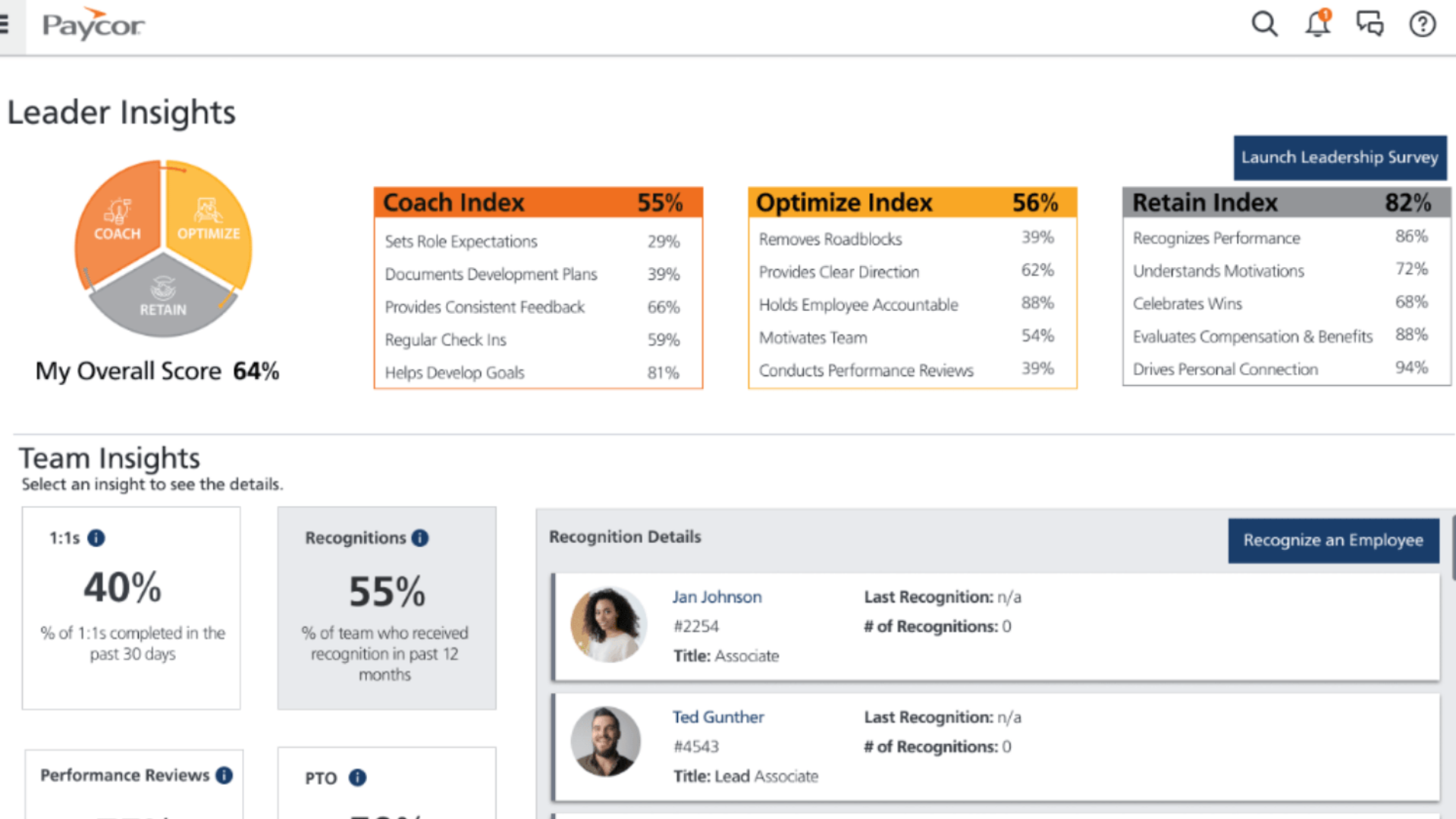Managing a meeting can often seem like an overwhelming task. Yet, research suggests that effective leadership in meetings can increase productivity, improve decision-making, and foster team collaboration.
This article offers practical tips and strategies for leading meetings effectively—from setting the agenda to facilitating active participation and ensuring follow-ups. Ready to transform your meeting management skills? Read on!
Key Takeaways
- Set a clear that outlines the topics, leaders, and timing of discussion to keep meetings on track.
- Encourage active participation by asking open – ended questions and allowing time for brainstorming.
- Start and end meetings on time to show respect for everyone’s schedule and maintain a productive atmosphere.
- Respect people’s time by sticking to the agenda and avoiding last – minute changes or cancellations.
10 Tips on How to Lead a Successful Meeting

Set the agenda, encourage participation, start and end on time, respect people’s time, adopt a clear communication style, be firm but flexible, allow time for brainstorming, share meeting notes, request feedback, and close the meeting effectively.
Set the agenda
Creating a clear, concise agenda is the first step in leading an effective meeting. This tool helps to establish focus and structure for the discussion. A well-thought-out agenda outlines topics to be discussed, identifies who will lead each section, and allocates timing for each subject.
It’s important to distribute this information prior to the meeting, allowing participants time to prepare. A solid agenda aids in keeping discussions on track, ensuring all necessary points are covered efficiently within designated timelines.
Encourage participation
Encouraging participation is essential for leading a successful meeting. By creating an inclusive environment, you can ensure that everyone feels comfortable speaking up, sharing their ideas and taking notes.
Begin by asking open-ended questions that promote discussion and invite different perspectives. Active listening is key during this process, as it shows respect for others’ opinions and encourages them to contribute more.
Additionally, consider using techniques such as brainstorming or group exercises to foster collaboration and engagement among participants. By actively encouraging participation, you can make your meetings more effective and productive.
Start and end on time
Starting and ending meetings on time is crucial for effective meeting leadership. By beginning promptly, you show respect for everyone’s time and set the tone for a productive session. You should always send meeting calendar and use tools like Google Calendar to block the timing of the respective people.
It allows participants to focus and be fully engaged from the start. Similarly, ending on time ensures that people can move on with their day and prevents unnecessary delays or rushed discussions.
Keeping track of the clock and adhering to the allotted timeframe demonstrates your commitment to efficiency and professionalism during meetings, creating an environment where everyone feels valued and respected.
Respect people’s time
Respecting people’s time is crucial when leading a meeting. Make sure to start and end the meeting on time, avoiding unnecessary delays that can frustrate participants. Stick to the agenda and allow sufficient time for each item without going off track.
This shows that you value everyone’s schedule and helps keep the meeting focused and productive. Additionally, avoid rescheduling or canceling meetings last minute, as this can disrupt people’s plans and create inconvenience.
By respecting people’s time, you demonstrate professionalism and build trust among your team members.
Adopt a clear communication style

To lead a successful meeting, it is crucial to adopt a clear communication style. This means expressing your thoughts, ideas, and expectations in a concise and straightforward manner.
Avoid using jargon or complex language that may confuse participants. Speak confidently and articulate your points clearly so that everyone understands the purpose of the discussion.
Additionally, make sure to actively listen to others and encourage open dialogue among attendees. By adopting a clear communication style, you can create an environment that promotes understanding, collaboration, and effective decision-making during the meeting.
Be firm but flexible
As a meeting leader, it is important to strike a balance between being firm and flexible. While you need to establish authority and maintain control of the meeting, it is also essential to be open to different ideas and perspectives.
Being firm means setting clear expectations, enforcing the meeting agenda, and keeping attendees on track. However, being flexible involves allowing for discussion and brainstorming, being receptive to new suggestions, and adapting plans if necessary.
By finding the right balance between firmness and flexibility, you can create an environment that encourages collaboration while still achieving your desired outcomes.
Allow time for brainstorming
Allowing time for brainstorming is an essential aspect of leading a successful meeting. By providing space for participants to share their ideas and suggestions, you can foster creativity and collaboration within the group.
Encourage everyone to contribute, no matter how big or small their idea may seem. Remember that brainstorming is a judgment-free zone, where all ideas are welcome. As the leader, actively listen to ensure that every voice is heard and acknowledged.
This collaborative approach will not only generate innovative solutions but also create a sense of ownership among team members. So, be sure to allocate sufficient time for brainstorming during your meetings to harness the power of collective thinking and problem-solving.
Share meeting notes

Share meeting notes with all participants after the meeting. This ensures that everyone is on the same page and has a clear understanding of what was discussed and decided upon. By sharing the notes, you allow individuals who may have been unable to attend the meeting to stay informed.
It also serves as a reference for future discussions and helps in holding people accountable for their actions or commitments made during the meeting. Sharing meeting notes promotes transparency, collaboration, and communication within your team or organization.
Request feedback
To improve your skills as a meeting leader, it’s important to request feedback from participants. This allows you to gain valuable insights into what worked well and areas that may need improvement.
Actively seek feedback by asking specific questions such as “What did you find most effective about the meeting?” or “Is there anything we could have done differently?” Be open to receiving constructive criticism and use it as an opportunity for growth.
By requesting feedback, you demonstrate that you value input from others and are committed to continuously improving your leadership abilities in running successful meetings.
Close the meeting effectively
Close the meeting effectively by summarizing the key discussion points and decisions made during the meeting. Ensure that everyone is clear on next steps and any action items assigned to individuals or teams.
Thank everyone for their contribution and participation, acknowledging any particular achievements or milestones reached during the meeting. End on a positive note, highlighting the value of collaboration and emphasizing the importance of continued communication and follow-up after the meeting.
The Chairman’s Role in Running a Meeting
The chairman plays a crucial role in running a meeting, from structuring the discussion to controlling flow and encouraging diverse ideas. Discover key strategies for effective meeting leadership.
Read more to become an expert in leading productive meetings.
Master or servant?
In the role of a meeting chairperson, you must consider whether you will be seen as a master or servant. While it’s important to take charge and facilitate the discussion, it is equally crucial to create an environment that encourages collaboration and respects everyone’s input.
Balancing authority with inclusivity ensures that all participants feel valued and engaged throughout the meeting. As the chairperson, your goal is to guide the conversation while promoting active participation from all attendees.
Structuring the discussion
Structuring the discussion is a crucial aspect of leading a meeting effectively. It involves organizing the flow of ideas and ensuring that everyone has an opportunity to contribute.
One way to do this is by starting with a clear agenda that outlines the topics to be discussed and the time allocated for each item. As the meeting progresses, it’s important to facilitate productive discussions by encouraging active participation from all attendees.
This can be done by asking open-ended questions and allowing sufficient time for brainstorming and problem-solving. By structuring the discussion in this manner, you can ensure that your meetings are focused, engaging, and yield fruitful outcomes.
Dealing with the subject and the people
When leading a meeting, it is important to effectively deal with both the subject matter and the people involved. To address the subject matter, clearly define the objectives and goals of the meeting so that everyone is on the same page.
This will help keep discussions focused and ensure that progress is made. Additionally, it’s crucial to structure the discussion in a way that allows for meaningful contributions from all participants while also keeping things on track.
In terms of dealing with people during a meeting, it’s essential to create an inclusive environment where everyone feels comfortable sharing their ideas and opinions. Encourage active participation by actively listening to what others have to say and valuing their input.
Be open-minded and flexible when considering different perspectives or approaches. Lastly, be mindful of any conflicts or disagreements that may arise during discussions and address them proactively in order to maintain a productive atmosphere throughout the meeting.
Controlling the flow and participation
To effectively lead a meeting, it is crucial to have control over the flow and encourage active participation from all attendees. As the chairman, you should steer the conversation in a focused direction and prevent it from deviating off-topic.
Keep an eye on time management to ensure that discussions do not drag on unnecessarily. It is also important to create an inclusive environment where everyone feels comfortable speaking up and contributing their ideas.
Encourage diverse perspectives and facilitate open dialogue to foster collaboration among team members. By maintaining control of the flow and promoting participation, you can drive productive discussions and achieve better outcomes for your meetings.
Encouraging diverse ideas

To foster a culture of creativity and innovation, it is important for meeting leaders to encourage diverse ideas. By creating an open and inclusive environment, participants will feel comfortable sharing their thoughts and perspectives.
Leaders can achieve this by actively listening to everyone’s input, valuing different opinions, and avoiding judgment or criticism. Additionally, leaders can promote diverse thinking by asking open-ended questions that stimulate discussion and challenge conventional wisdom.
By embracing a range of ideas and perspectives, meetings become more dynamic and productive, leading to better decision-making outcomes.
Close on a note of achievement
End your meeting on a positive and productive note by summarizing the key takeaways and accomplishments. Recognize team members’ contributions and highlight any progress made towards the meeting’s objectives.
This helps to reinforce a sense of achievement and motivates participants for future meetings. Ending on a high note also fosters a positive atmosphere within the team, encouraging collaboration, engagement, and continued commitment to achieving goals.
By closing on a note of achievement, you ensure that everyone leaves the meeting feeling accomplished and inspired to move forward.
How to Run an Effective Meeting for increased productivity
To run an effective meeting, it is crucial to define the objective, make preparations, establish ground rules, facilitate effectively, manage personalities, and follow up.
Defining the objective
Defining the objective is the first step in leading a successful meeting. Clearly stating the purpose and desired outcome of the meeting ensures that everyone is on the same page and understands what needs to be achieved.
By defining the objective, you set a clear direction for the discussion and create focus among participants. This helps to maintain productivity and prevent unnecessary tangents or distractions during the meeting.
When everyone knows what they are working towards, it becomes easier to stay aligned and make progress towards your goals. So, take some time before each meeting to define its objective and communicate it effectively to your team or participants.
Making preparations
Making preparations is crucial for leading a successful meeting. Before the meeting, it’s important to define the objective and determine what needs to be accomplished. This includes creating an agenda with specific topics and timeframes, as well as gathering any necessary materials or documents in advance.
Additionally, consider who should be invited to the meeting based on their expertise or involvement in the topic at hand. By adequately preparing for a meeting, you can ensure that everyone is on the same page and maximize productivity during the discussion.
Establishing ground rules
Establishing ground rules is crucial for leading a productive meeting. By setting clear guidelines, you create an environment that encourages everyone to participate and ensures that the meeting stays focused and on track.
Ground rules can include things like starting and ending on time, respecting each other’s opinions, allowing one person to speak at a time, and keeping discussions confidential. When everyone knows what is expected of them, it helps to prevent misunderstandings and promotes effective communication throughout the meeting.
Facilitating effectively
Facilitating effectively is a crucial skill for leading a successful meeting. As the facilitator, it’s important to create an environment where everyone feels heard and encouraged to participate.
This can be done by establishing clear ground rules at the start of the meeting and ensuring that they are followed throughout. Active listening is another key aspect of effective facilitation – it involves really hearing what others have to say and responding in a thoughtful manner.
By facilitating effectively, you can help guide the discussion, manage any conflicts that arise, and ultimately achieve the objectives of the meeting.
Managing personalities

Understanding and managing different personalities is key to leading a successful meeting. Each participant brings their own unique traits and communication styles, so it’s important to adapt your approach accordingly.
Be aware of any potential conflicts or power dynamics that may arise and address them tactfully. Encourage open dialogue and active listening, ensuring everyone has an opportunity to contribute.
By recognizing and managing personalities effectively, you can create a harmonious environment where ideas flow freely and collaboration thrives without dominating or overshadowing others.
Following up
Following up after a meeting is crucial for effective communication and accountability. This step ensures that the discussed topics, action items, or decisions are properly implemented or addressed.
It helps to keep everyone on track and prevents any tasks from falling through the cracks. By promptly following up, you demonstrate your commitment to the success of the meeting outcomes and show respect for everyone’s time and effort.
Whether it’s sending out meeting minutes, assigning tasks, or scheduling follow-up meetings, taking these actions will help maintain momentum and ensure that progress continues beyond the initial discussion.
Additional Resources and Tips for Leading Meetings
Explore podcasts and articles that provide further guidance on leading meetings effectively. Assess your leadership skills to identify areas for improvement, particularly in team collaboration and communication.
Continuously invest in professional development to enhance your meeting leadership abilities. Seek feedback from meeting participants to understand how you can improve future meetings.
Emphasize the importance of making meetings essential and productive for all involved.
Podcasts and articles for more guidance
Explore a range of podcasts and articles that provide valuable guidance on how to lead a meeting effectively. These resources offer practical tips, strategies, and best practices for successful meeting leadership.
From managing time and encouraging participation to fostering collaboration and making meetings more productive, these podcasts and articles cover various aspects of leading a meeting with confidence.
Dive into these resources to enhance your skills, gain new insights, and become a more effective leader in your next meeting.
Rate your leadership skills
Evaluate your leadership skills to gauge your effectiveness in leading meetings. Consider how well you set agendas, encourage participation, and respect people’s time. Assess your ability to communicate clearly and be firm yet flexible when needed.
Reflect on whether you allow time for brainstorming, share meeting notes, and request feedback from participants. Lastly, evaluate how effectively you close the meeting. By honestly assessing these aspects of your leadership skills, you can identify areas for improvement and enhance your ability to lead successful meetings.
Team Leadership skills
Effective team leadership is crucial for running successful meetings. As a leader, it is vital to possess strong communication and interpersonal skills to engage team members and foster collaboration.
Active listening allows you to understand diverse perspectives within the group, while clear and concise communication ensures that everyone understands their roles and responsibilities.
Additionally, effective leaders exhibit problem-solving abilities by encouraging brainstorming sessions and facilitating discussions that lead to innovative solutions. By practicing these skills, leaders can create an environment where teams feel empowered, motivated, and inspired to contribute their best during meetings.
Continuous improvement and professional development
Continuous improvement and professional development are crucial for effective meeting leadership. As a leader, it is important to constantly strive to enhance your skills and knowledge in order to lead meetings more effectively.
This can be done through attending relevant workshops, seminars, or training programs that focus on improving meeting facilitation techniques, communication skills, and conflict resolution strategies.
Additionally, seeking feedback from meeting participants and reflecting on your own performance can provide valuable insights for growth. By continuously investing in your professional development as a leader, you can stay updated with the latest best practices and become even more proficient in leading productive meetings.
Getting feedback from participants

Ask for feedback from participants to gauge their satisfaction with the meeting and gather valuable insights for improvement. Create a safe and open environment where attendees feel comfortable sharing their thoughts.
Use a variety of methods, such as surveys or verbal discussions, to gather feedback. Make sure to actively listen to what participants have to say and take their suggestions into consideration for future meetings.
This allows you to continuously improve your meeting leadership skills and create a more productive and engaging experience for everyone involved.
Importance of making meetings essential
Making meetings essential is crucial for effective communication and collaboration within a team or organization. Meetings provide an opportunity to share information, discuss important topics, and make decisions together.
When meetings are seen as necessary and valuable, participants are more likely to actively engage and contribute their ideas. By ensuring that meetings have a clear purpose, agenda, and desired outcomes, leaders can create an environment where everyone feels heard and involved.
Making meetings essential helps foster teamwork, improves problem-solving capabilities, and strengthens relationships among team members. It demonstrates the importance of open dialogue and effective communication in achieving shared goals.
Conclusion
Leading a meeting effectively is crucial for ensuring productivity and achieving desired outcomes. By following the tips and strategies outlined in this article, such as setting clear agendas, encouraging participation, and respecting people’s time, you can become a successful meeting leader.
Remember to be firm yet flexible, allow for brainstorming sessions, share meeting notes, request feedback, and close the meeting on a positive note. With these skills and practices in place, you’ll be able to run efficient meetings that drive collaboration and success.
So go ahead and take charge of your next meeting with confidence!
FAQs
What does leading a meeting involve?
Leading a meeting involves mastering meeting leadership skills like managing the agenda, facilitating productive discussions, making decisions and solving problems effectively.
How can I lead an efficient meeting?
To lead an efficient meeting, you should practice effective meeting leadership practices like setting clear objectives, assigning tasks beforehand and keeping track of time.
What are some strategies for leading a successful meeting?
Successful meetings require strategies such as preparing a clear agenda, promoting collaborative decision-making processes, and actively managing the flow of conversation to ensure all voices are heard.
Can tips for successful meeting leadership improve my ability to run meetings?
Absolutely! Learning key principles of leading a meeting and implementing best practices for your meetings would certainly enhance your efficiency in running them.
What is important when chairing or facilitating a productive meeting?
When chairing or facilitating a productive meeting it’s crucial to establish an environment conducive to problem-solving while also ensuring that every participant has active involvement in the discussion process.





